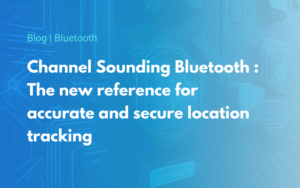Calibration of industrial temperature sensors, what does the regulation say?
Reading time
Level

The IoT market has been growing for several years and is expected to exceed 5 billion connected objects by 2022. Industrial applications are numerous and the benefits are considerable: improvement of operating costs, optimization of processes, improvement of customer satisfaction, improvement of the safety of people and property … Among these applications, the temperature monitoring is probably the most widespread, whether in transport, storage or smart building. To meet these challenges, manufacturers of industrial connected objects are offering increasingly small, intelligent, and precise sensors. Indeed,data accuracy and reliability are major issues in securing the storage and transport of temperature-sensitive goods, such as foodstuffs or pharmaceuticals. To do this, like any measuring device, the temperature sensors must be checked periodically. Periodic verification is subject to regulation and refers more specifically to the EN13486 standard.
In this article, we present you the COFRACorganization and its certification, then we focus on the regulation concerning the periodic verification of temperature probes.
What is COFRAC? What is the difference between a COFRAC accredited certification and a COFRAC linked certification ?
COFRACis the French Accreditation Committee. In France, COFRAC is the only reference body for accreditation. It accredits the certifying organizations involved in issuing calibration certificates.
It is important to note that there are two types of COFRAC certificates: COFRAC accredited certificates and COFRAC linked certificates. In the first case, accreditation recognizes the ability of a national or international laboratory to carry out calibration or metrological verification. The linked COFRAC calibration, on the other hand, is not performed by a COFRAC accredited laboratory, but is a calibration for which the measurement results can be linked to the national standards (COFRAC). Note that only a COFRAC accredited laboratory can use the COFRAC logo in its reports.
Is a periodic check of the temperature sensors mandatory?
“The European Commission regulation N° 37/2005 dated January 12, 2005 indicates that the periodic verification according to the EN13486 standard is mandatory for the transport and storage of frozen food intended for human consumption. For other products transported or stored, the calibration of temperature sensors is not mandatory, but strongly recommended. Indeed, with time, the sensors drift, so it is advisable to ensure regularly that the data returned by the sensor is correct. This periodic verification of the recorders is the responsibility of the user. The user must carry out a risk assessment in order to determine the frequency of the verification and this verification must be carried out by a metrology laboratory either COFRAC certified or using COFRAC certified standards.
How often should the temperature sensors be checked?
Regarding the frequency of verification, there is no rule and the text of the EN13486 standard (Learn more about this standard) says that “the frequency of verification depends on the user’s requirements, taking into account the manufacturer’s prescriptions”. Nevertheless, he gives some recommendations: “It is recommended, however, that the manufacturer or workshops authorized by the manufacturer or authorized verification services carry out an inspection each year, when the temperature recorders and thermometers have been used during this period”.
How many measurement points are required to obtain certification?
To carry out the calibration of your temperature sensors and obtain certification, it is necessary to take as many measurement points as the operating temperature range where the sensors or recorders will be used. For example, if the sensors are only used at -20°C, only one measuring point will be required. If, however, the recorders are used at -20°C and +2°C, two measuring points will be required.
What is the accuracy class of a temperature sensor?
The EN13486 standard imposes certain classes of sensor accuracy depending on the sector of activity. The class of a sensor is defined according to the measurement accuracy it returns. For example, if a sensor is certified class 1, this means that the data collected is accurate to + or – 1°C. The closer the number in this class is to zero, the more accurate the sensor will be.
To conclude
The control and monitoring of temperatures throughout the cold chain are very important issues with regard to the quality of goods. As a result, the range of connected temperature sensors is constantly expanding. It has therefore become essential for manufacturers investing in this type of product to check with their suppliers to ensure the compliance of the loggers, but also to ensure the accuracy of the data reported by the latter and its evolution over time. Although periodic verification is not mandatory, it is strongly recommended in order to secure your heat-sensitive goods. To find out more about the regulations, you can visit the AFNORwebsite.


